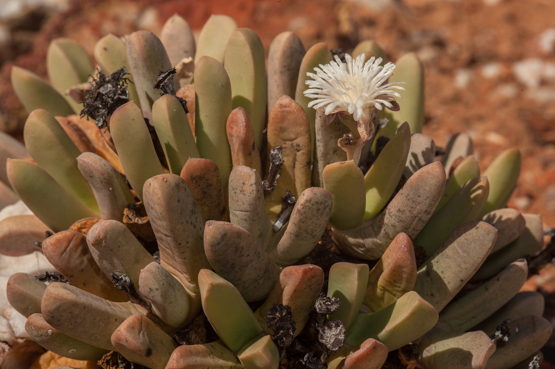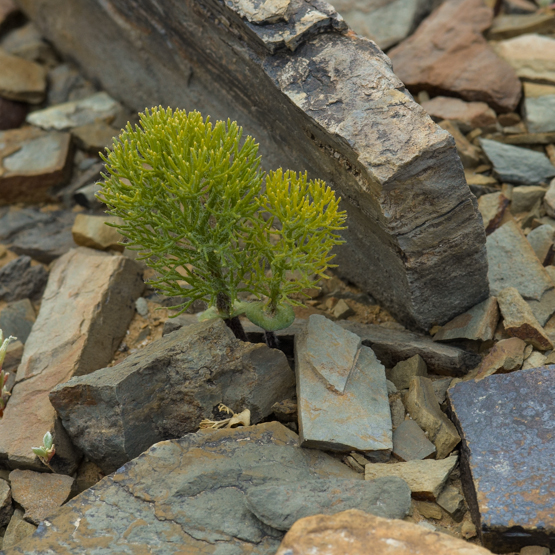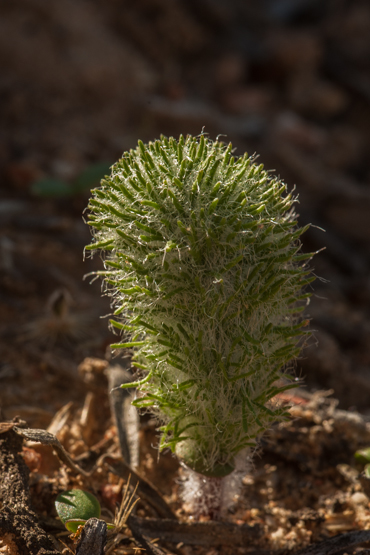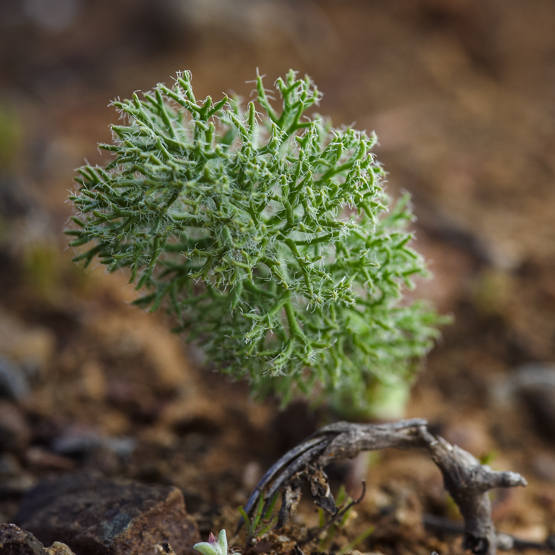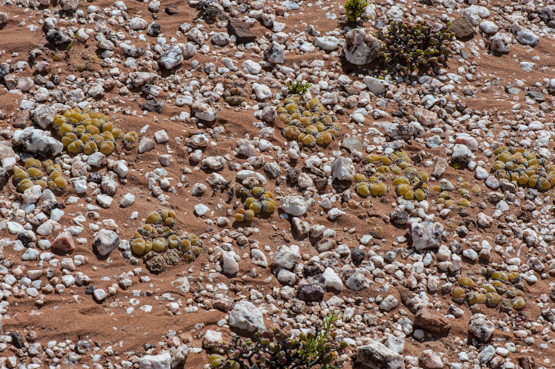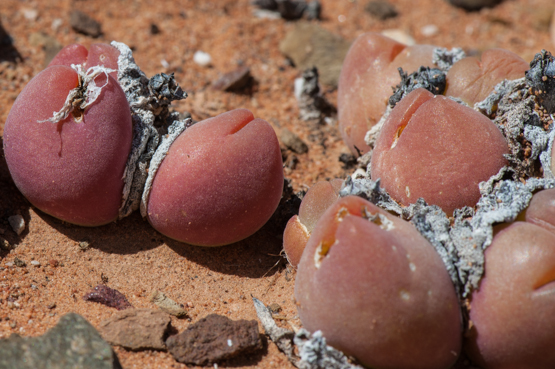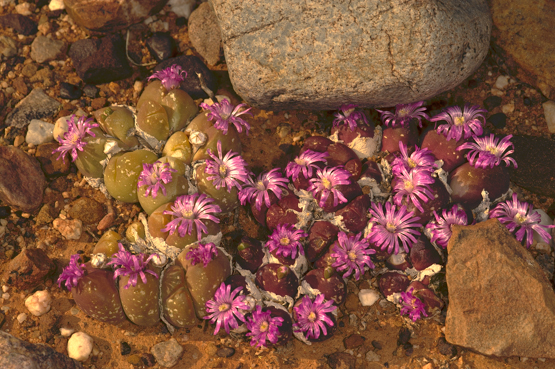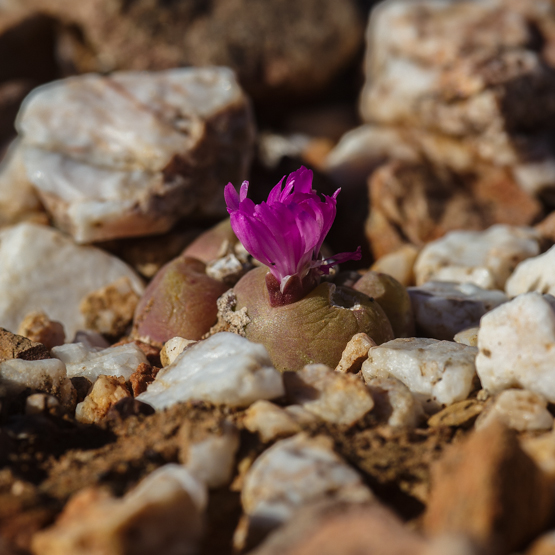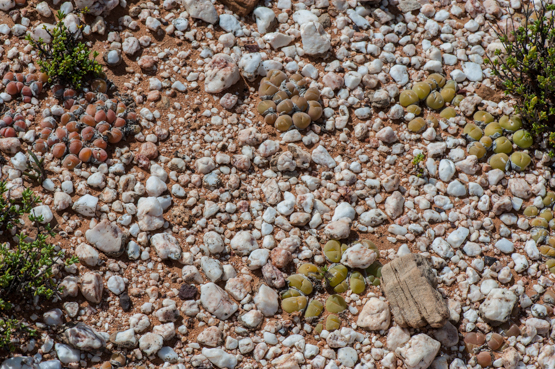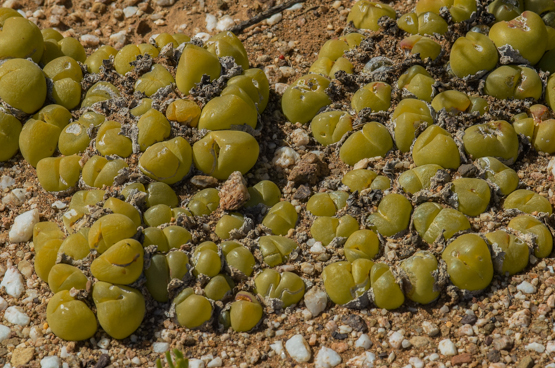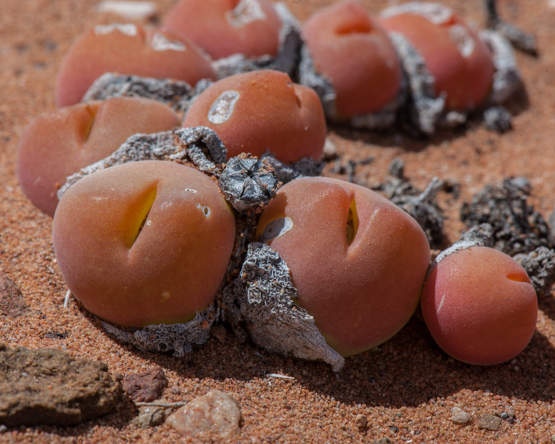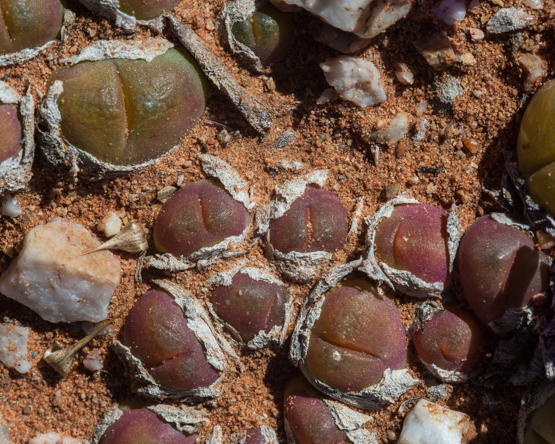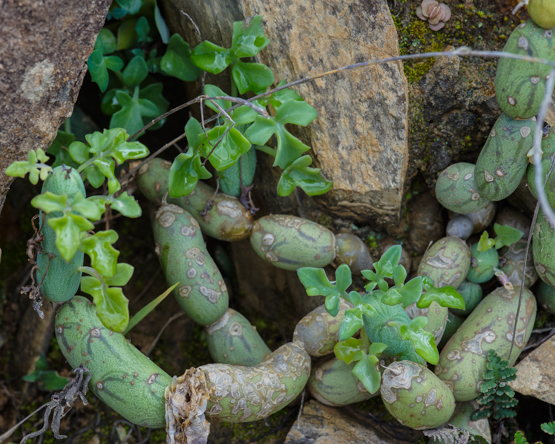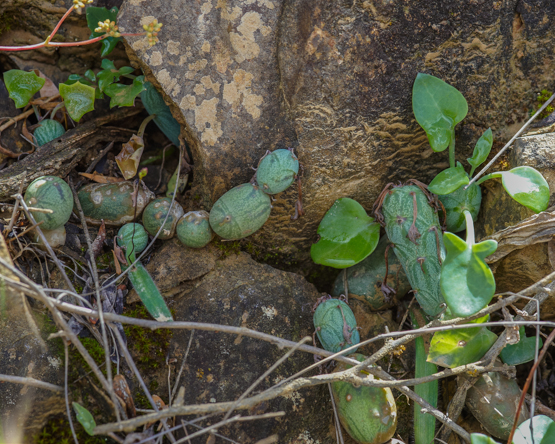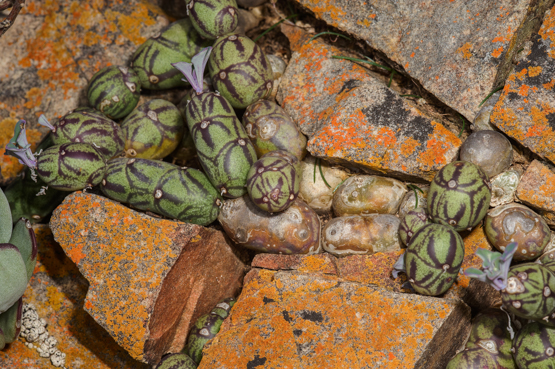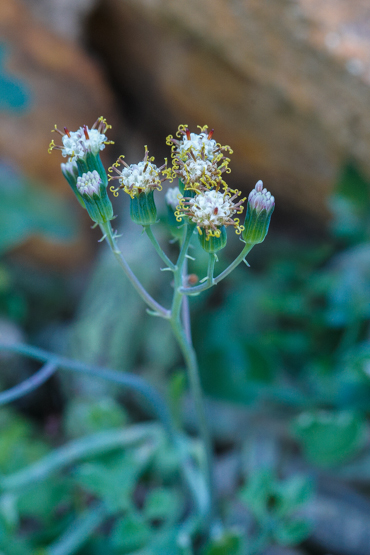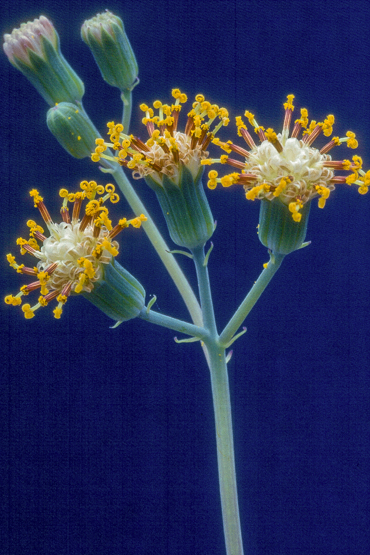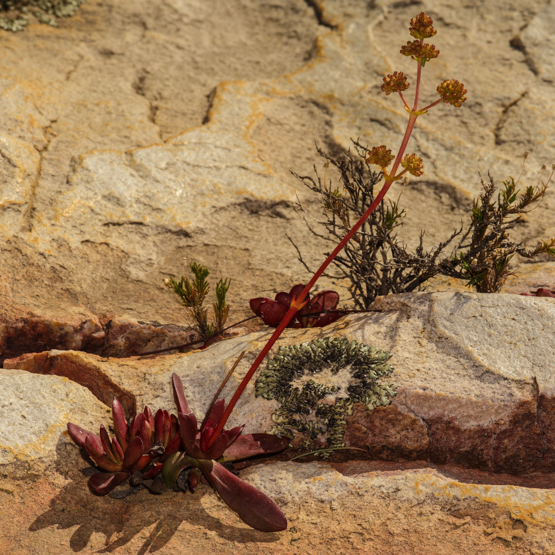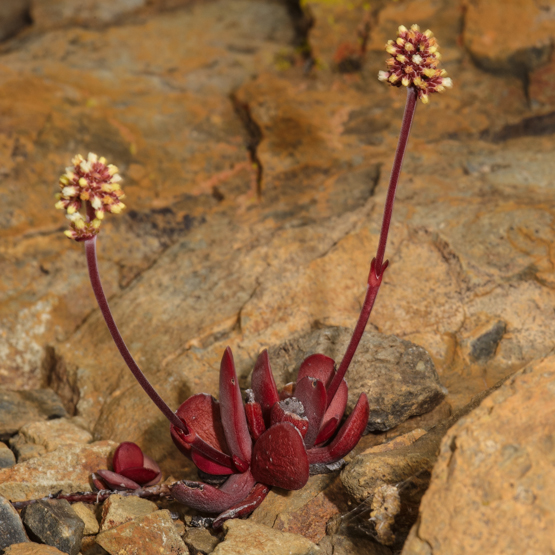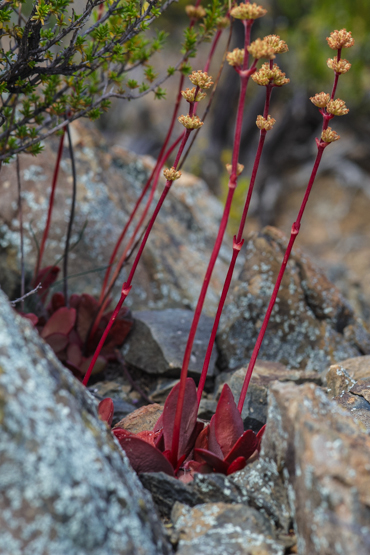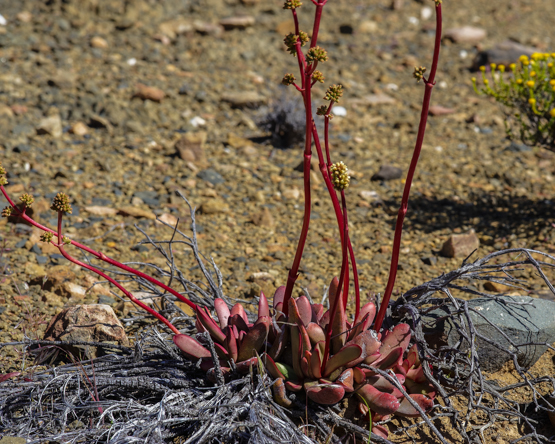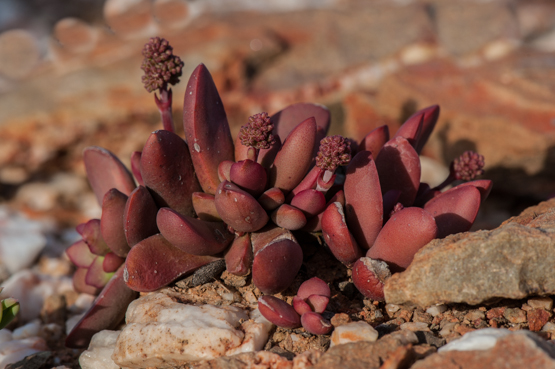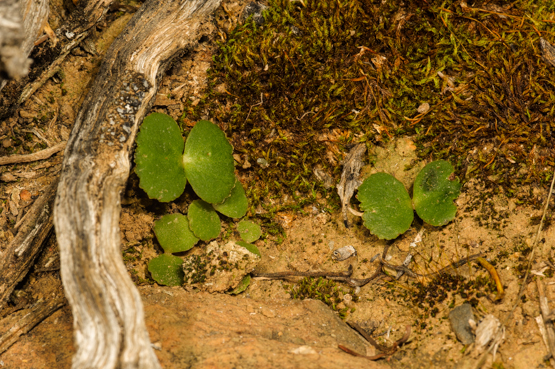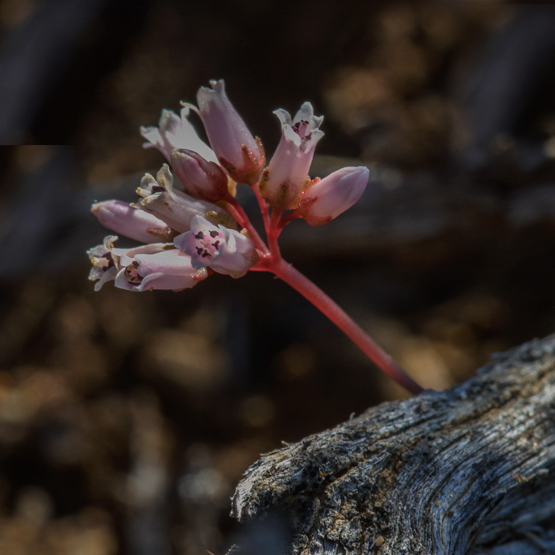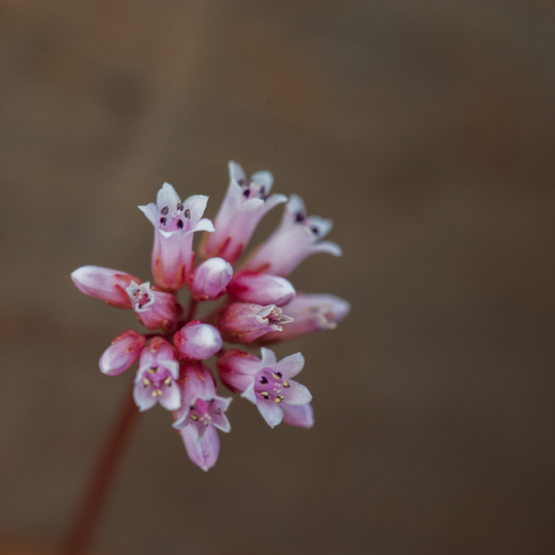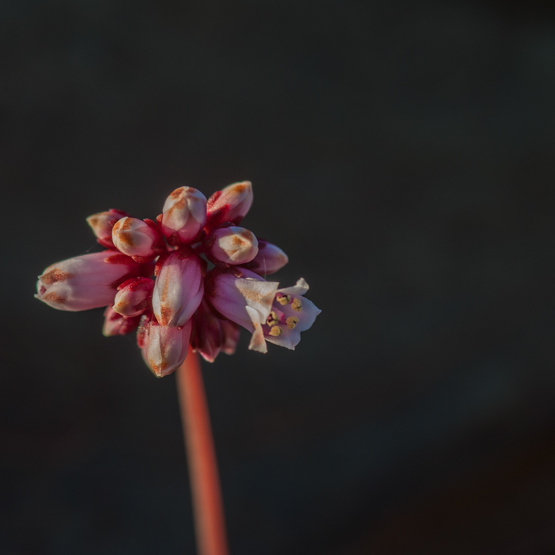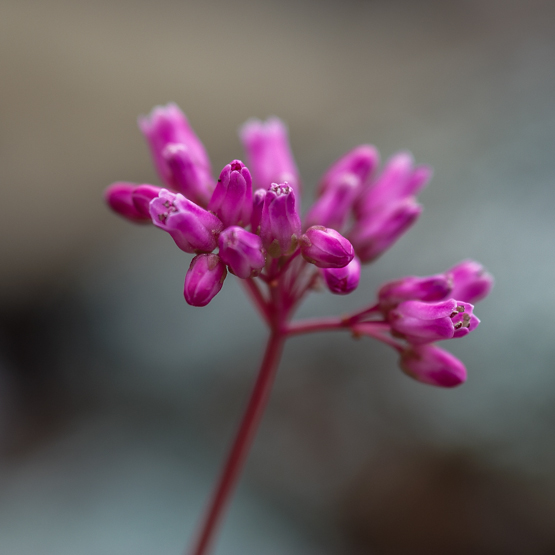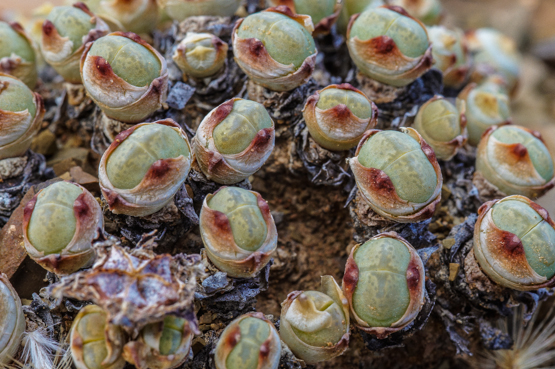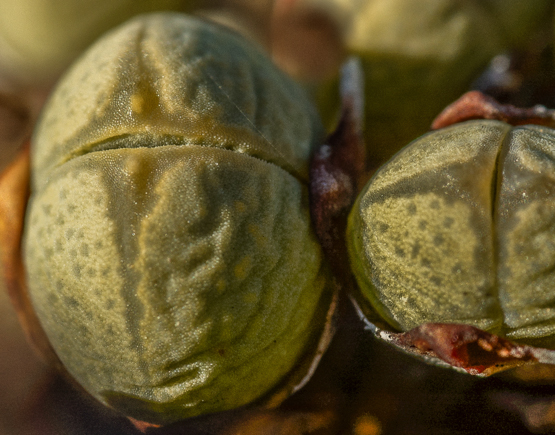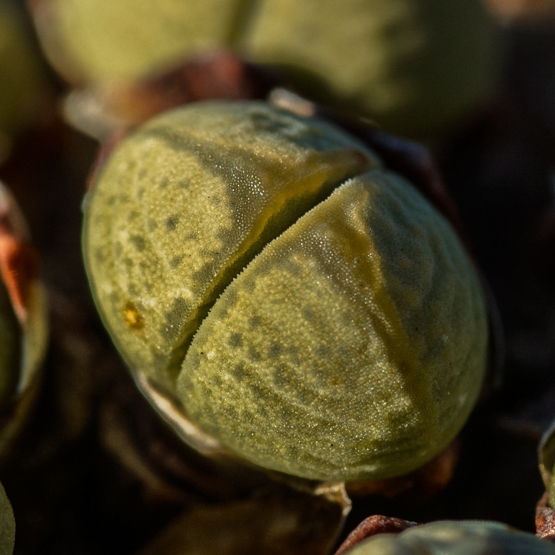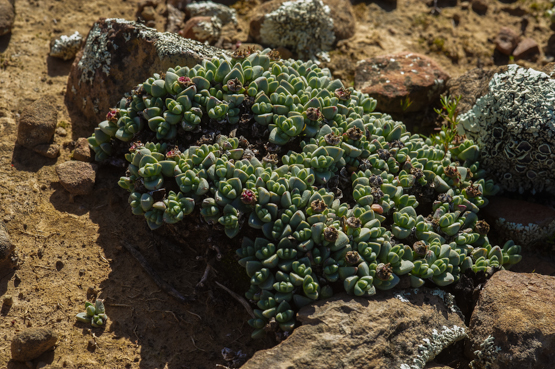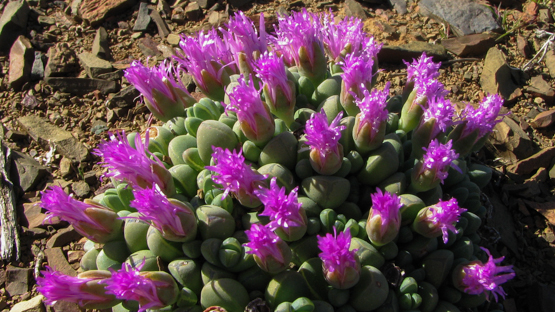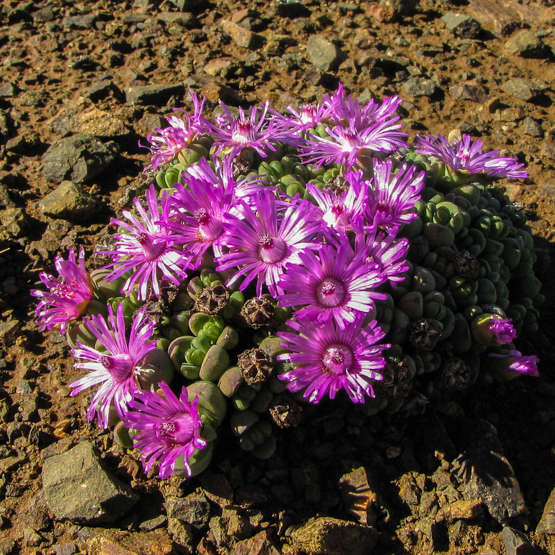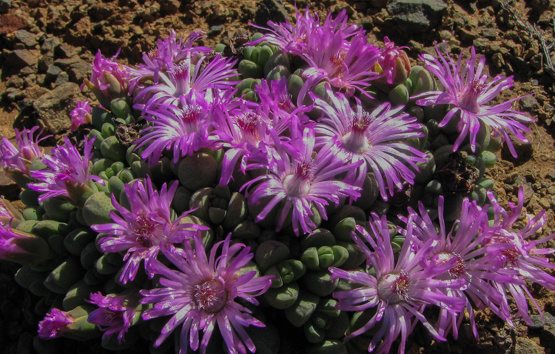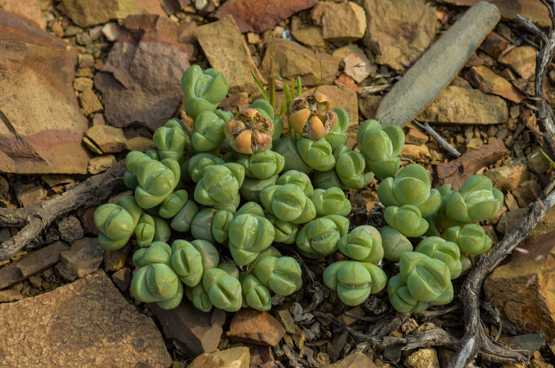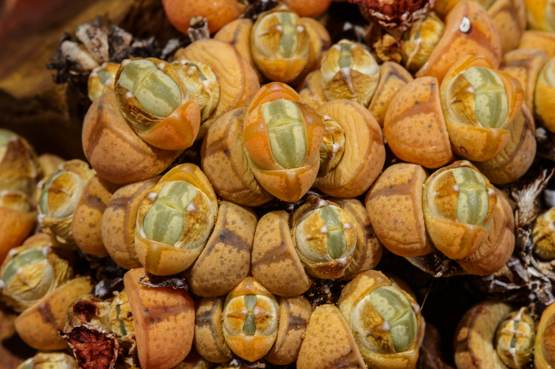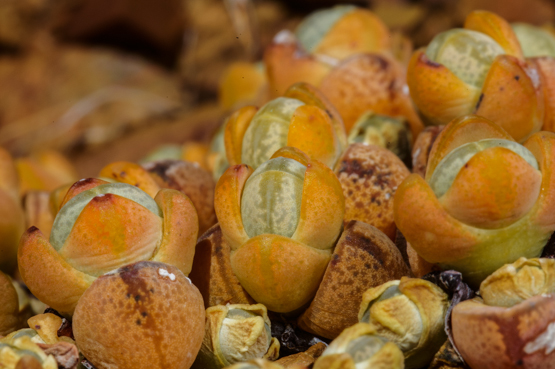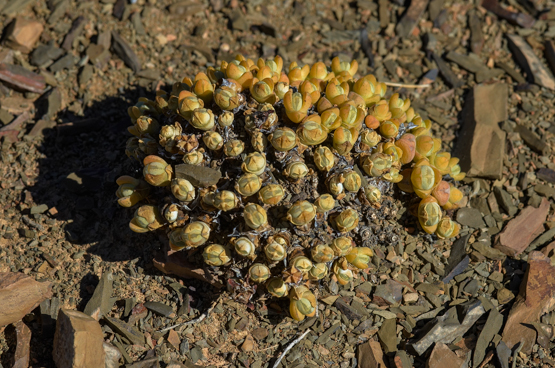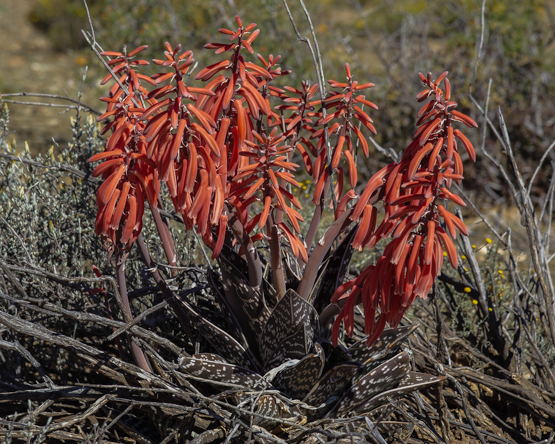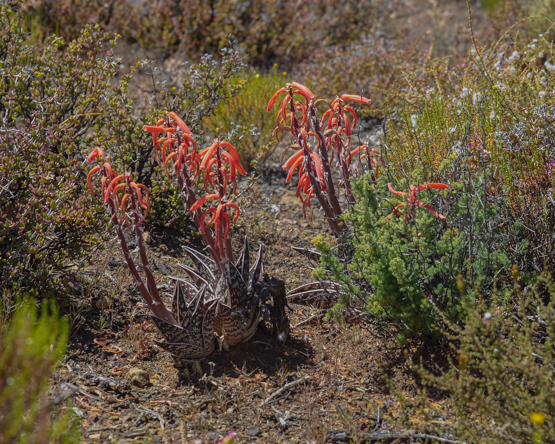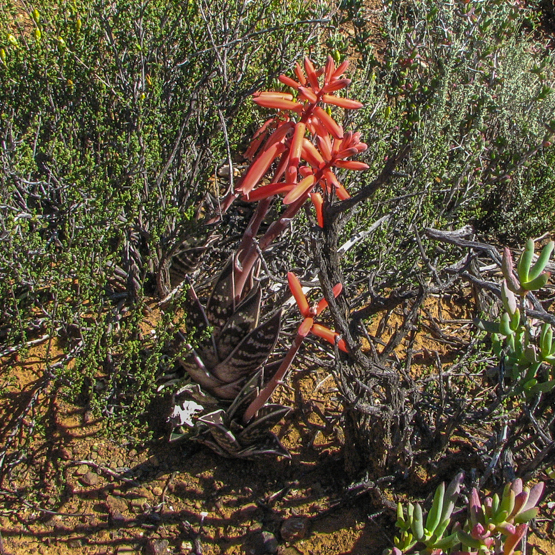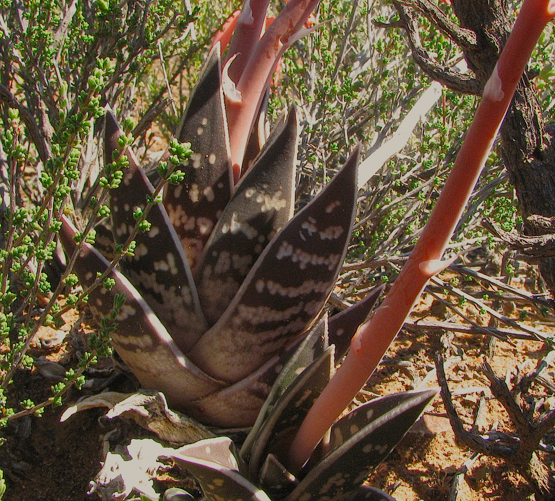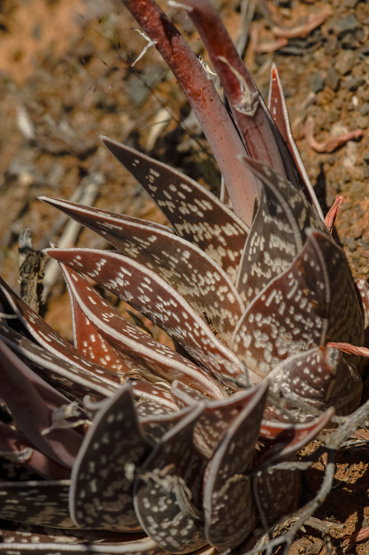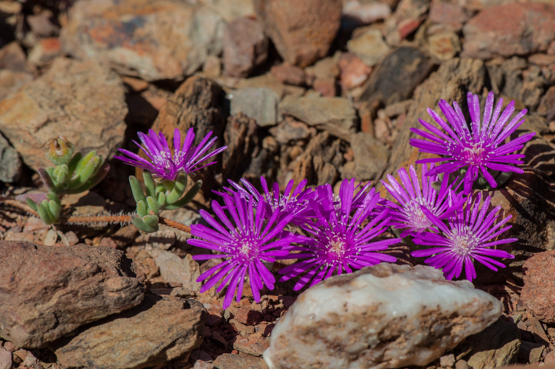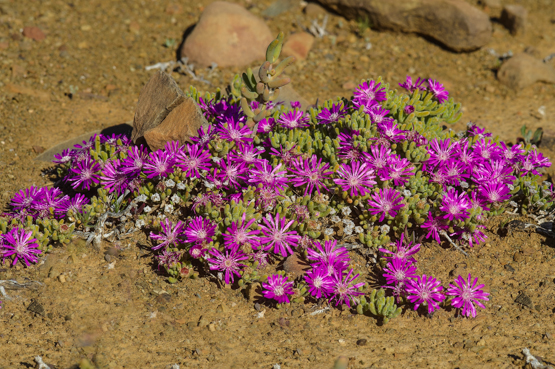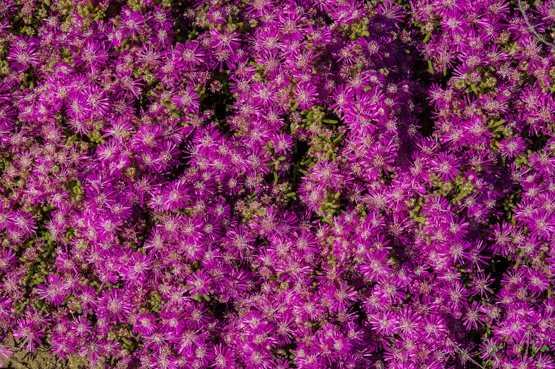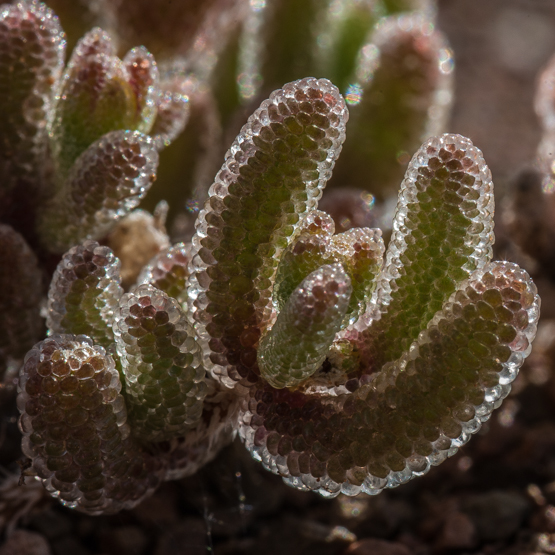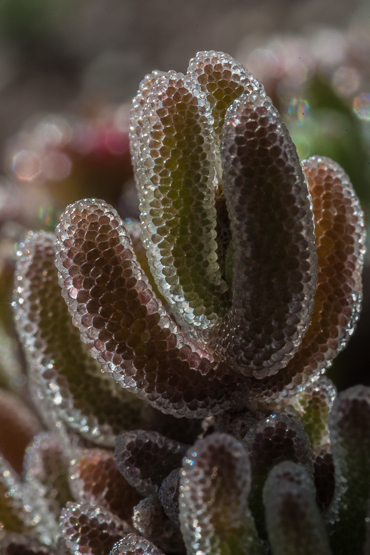The genus Nelia contains only two species: N. pillansii and N. schlechteri. Its greatest claim to fame is the fact that the flowers after opening stay open continuously for up to three weeks. The plants occur on quartz fields near the coast in northern Namaqualand.
Tag: South African succulents
Eriospermum paradoxum
The family Eriospermaceae contains only one genus, with about a hundred species. The name Eriospermum means woolly seed, referring to the long hairs that cover the seeds. The plants have underground tubers, which in most species produce only one leaf per year. In the case of E. paradoxum the leaf is about 7×6 mm, bearing a peculiar and distinctive tree shaped outgrowth (enation), which may be up to 11 cm long and 3 cm wide. The leafing period is May to October, slightly overlapping the flowering time (April/May).
E. paradoxum has a wide distribution in the winter rainfall area, from the Richtersveld in the north-west to near Grahamstown in the Eastern Cape, on sandy or clayey soils.
Gibbaeum nuciforme 2
Gibbaeum nuciforme (G. cryptopodium) 1
A widely distributed species (from Zebra, between George and Oudtshoorn, to the Montagu area), often locally abundant on loamy soils with quartz pebbles.
The very soft, almost translucent bodies lie flat on the ground (cryptopodium literally means “with hidden foot”) and in dry periods often almost disappear from sight. In the rainy season they are yellowish green, often turning red in the dry period. They are more or less round or egg-shaped (nuciforme = shaped like a nut).
To be continued.
Senecio (Curio) articulatus
In 1997 Senecio articulatus was placed in the genus Curio, together with a number of other succulent Senecios. As the changes were published in a not very well known journal, they have not been generally accepted (yet?).
Poor old S. articulatus must be in an identity crisis by now, because since it was named first, it has been placed in four different genera (Cacalia, Kleinia, Senecio and now Curio).
Maybe we should just stick to the beautifully descriptive Afrikaans name Worsies (sausages).
The species is widespread from Montagu to Uitenhage, on rocky slopes, usually in (partial) shade.
Crassula clavata
Usually the plants show the deep purplish red colours that you see here, in which case they are easy to recognize, but sometimes the leaves are green or yellowish green, making identification less straightforward.
As a rule the leaves are glabrous, but in the isolated Richtersveld populations they are softly hairy. Most of the populations occur in the mountains bordering the Karoo southwards towards Touwsrivier and Prince Albert, in rock crevices and shallow pockets of soil.
The flowers appear in September and October.
Crassula saxifraga
Another of the tuberous Crassulas, widespread from the Richtersveld to the Eastern Cape, in rock crevices (saxifraga means stone breaker) and on stony slopes. The tubers may be up to 9 cm across.
The white to dark pink flowers are relatively big (up to 7.5 mm long) and occur from April to June. The leaves usually appear after flowering.
Antimima pumila
Although this species sometimes occurs in big colonies, it is nevertheless rather rare, as a result of the limited distribution area (along the border of the winter rainfall area, more or less in the Ceres-Sutherland-Laingsburg triangle). With leaves about a centimeter long, it really lives up to its name (pumila = dwarf).
The difference in appearance between plants in the resting and the growing period is so great that Louisa Bolus described the species twice within two years (as Ruschia pumila and R. levynsiae).
The pictures shown here will hopefully give you a good idea how much the plants change in a couple of months.
The first picture was made at the end of April (= Autumn) and the last one mid November (end of Spring). The flowering plants were photographed end of July-beginning of August.
Aloe variegata
This beautiful and distinctive plant was one of the first Aloes to be successfully cultivated in Europe.
The Afrikaans common name is Kanniedood (cannot die), which may explain why one sees it often planted on graves. It is widely distributed in the dry parts of southern Africa.
The plants prefer stony ground in partial shade (I have never seen a more healthy plant than the one my mother used to grow on her shaded windowsill – and that was in in Holland, not a country known for it abundant sunshine to start with).
Drosanthemum hispidum
From late Winter to early Summer one can find this species in flower in southern Namibia and many parts of South Africa. It is an important pioneer on disturbed soil, e.g. roadsides, forming mats of up to a meter across. For that reason it is also a good ground cover in suitable climates.
The hairy stems make it usually easy to recognize this plant. The beautiful bladder cells on the leaves are best admired in back light.
